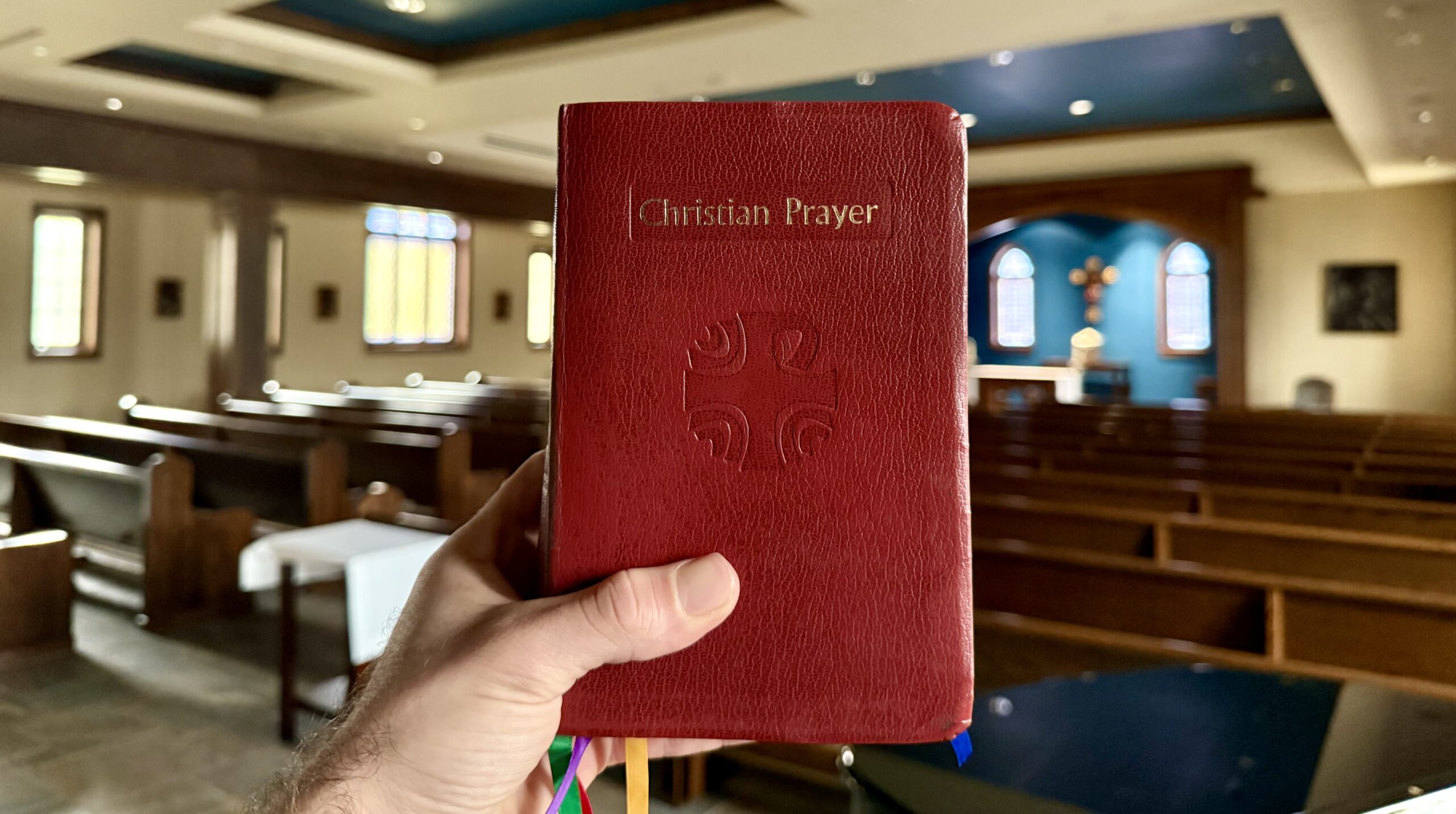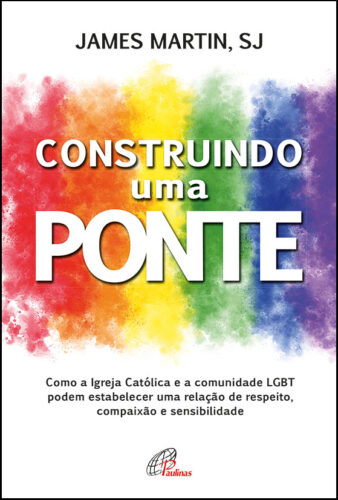I remember the first time I came across the Liturgy of the Hours during a group retreat. Having never heard of it, I struggled to keep up with the responses as I flipped through the ribbons and pages in my Christian Prayer book, trying to keep up with the alternating responses. Yet, despite my confusion, the words, hymns, and sense of community that came with the liturgy instantly captivated me.
By the next morning, I was looking forward to praying “the hours” again, even if I still had some trouble rifling through the book. Over the course of that retreat—and several more—I grew to enjoy the ritual more and more, but it wasn’t until about a year ago that I began to regularly practice it.
The Liturgy of the Hours is the official prayer of the church, prayed both with Christ and to Christ. Rooted in centuries of tradition, it sanctifies the day through continuous prayer. It is regularly prayed by priests, deacons and religious communities, but many laypeople and families have also taken up the practice. There are five “hours,” or prayer times, throughout the day: morning, daytime (which can be prayed at either midmorning, midday, or midafternoon), evening, night, and office of readings. Although some have particular components, they all revolve around the psalms, a reading from Scripture and other common prayers.
The Liturgy of the Hours is the official prayer of the church, prayed both with Christ and to Christ.
Each hour begins with the prayer “God come to my assistance. Lord, make haste to help me.” This is followed by a short hymn and a set of psalms, which can be prayed communally in a choir-response style or individually. There is always a passage from Scripture and a brief call and response that reflects said reading. While morning, evening and night prayer come with a canticle, other hours contain additional readings, the Our Father and other particular components. Finally, there is a concluding prayer which not only marks the end but invites the individual to entrust him or herself to God through the rest of the day and into the night.
Last summer, I realized that my prayer life had become passive and dry, and I longed for a new way to encounter God. I knew that if I were going to flourish and endure the trials of life, I needed to be rooted in faith and prayer. I wanted to have something consistent, something I could turn to not only when I was feeling inspired and had ample time, but also in the midst of the busyness of life, when time and creativity are limited. I decided to give the Liturgy of the Hours a try, specifically Night Prayer. Since then, it has become a rock in my life.
Incorporating prayer into my life bolstered my relationships with those I love, and I eventually invited others to pray with me. These moments of shared prayer deepened our connections.
I once read that the Liturgy of the Hours is a “freeing framework” and I couldn’t agree more. There is something deeply comforting in ending my day in prayer, offering the work of the day and myself to God as I finally close my eyes to rest. While it is always a joy to pray other hours when I can, I know that even on the days when life gets busy and the days get away from me, I will end in conversation with God.
Incorporating prayer into my life bolstered my relationships with those I love. These moments of shared prayer deepened our connections.
Some nights, the words awaken my imagination with vivid images of God being a mighty stronghold and refuge. On good days, it incites me to give thanks and lifts me up. Other nights, it consoles me when I feel like my life is “on the brink of the grave.” On days or seasons when prayer is dry, the psalms give me the words when I am struggling to engage God. In those times, knowing it is already written for me takes out the guesswork of what I will say. All I have to do is show up. It is a steady and regular foundation.
Praying the Liturgy of the Hours is also very accessible—all it takes is a book or your phone, and you are ready to go. Learning how to maneuver the standard Liturgy of the Hours books can be a bit confusing at first, but there are various booklets and apps that lay it out all for you. If committing to five prayer times a day feels intimidating, you are not alone. It can be daunting, challenging to adhere to, and sometimes leaving you feeling defeated. I have found it easier to commit to a given hour, and remain consistent in it. For me, that hour is Night Prayer. This particular hour follows a weekly cycle, meaning that every Monday, Tuesday, and so on, you pray a prayer specific to that day. This makes it straightforward, and from there, you can build up to learn how to pray other hours.
The Liturgy of the Hours has also allowed me to explore a new way of praying communally. I have always enjoyed contemplative prayer and long walks by myself talking to God. And while personal prayer is essential, our faith is also meant to be experienced in community. This way of praying has provided me with an opportunity to pray with others—whether at retreats with friends, quiet mornings in a chapel on campus, or even in unexpected places, like the mountains of El Salvador with seminarians.
While personal prayer is essential, our faith is also meant to be experienced in community.
Because this is the prayer of the church, it allows people across all vocations, states of life and backgrounds to come together under one shared liturgy. It has even invited me to step outside of myself and pray for others. For example, if I am not connecting to the emotions found in the psalms, I call to mind others in my community or in the greater Body of Christ who might be feeling this way, and offer my prayer for them.
Although there are times when I pray throughout the day by myself, I have found it helpful to have a close and regular prayer partner. Every night, whether in person or over the phone, we come together for night prayer. Little did we know when we first started that this would sustain us through many seasons of life. When facing challenges, these prayers provide us with words before we are ready to talk. It bridges the gap that arguments create, both between each other and with God. In joyful times, it gives something to share and further rejoice in together. When we are knee-deep in work, it gives us a pause to recoup and take a breath. And in times of sickness or exhaustion, one of us prays the entire prayer aloud, which we have found to be one of the deepest ways in which we as humans can care for one another.
The Liturgy of the Hours has not perfected my prayer life. There are still highs and lows. Some days feel fruitful while others are dry. My practice of praying the hours is also not perfect. Sometimes I am fully focused, and other times, I will speed through Night Prayer because I am tired or overly preoccupied. But every so often, a line will suddenly strike me. A new image of God will pop in my mind. The comfort of repetition will soothe my rising anxiety. This prayer has given me a new way to connect with God and those around me. Praying with those I love has become one of our most meaningful and cherished experiences.
If you are looking for new ways to engage your faith and prayer life, whether alone or with others, consider trying the Liturgy of the Hours. It may take time to get used to, but you do not have to be perfect. Simply begin. Choose one hour, and commit to it. And know that I am offering my prayers for you.




